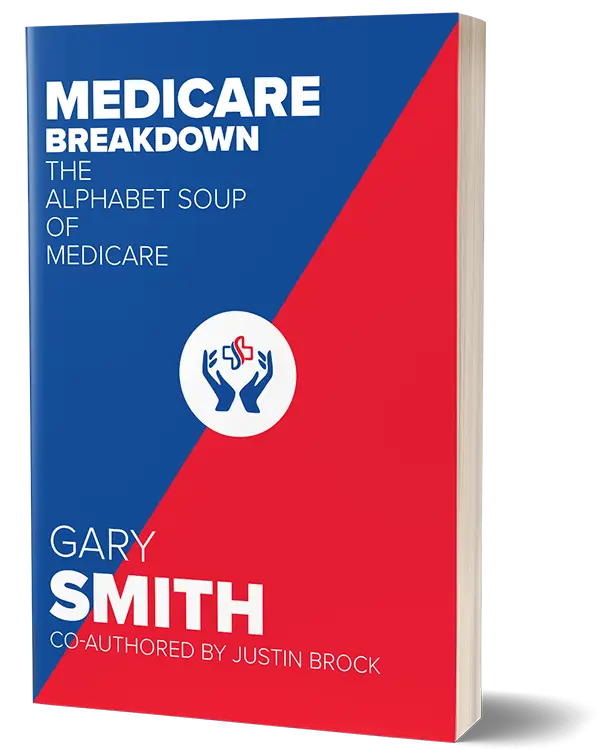 Key Medicare Coverage Terms Every Beneficiary Should Know: A Simple Glossary for Anyone
Key Medicare Coverage Terms Every Beneficiary Should Know: A Simple Glossary for Anyone
Medicare can feel overwhelming with all its parts, plans, and terminology, but having a basic understanding of these terms makes it easier to feel confident in your healthcare choices. This guide will walk you through some of the most important Medicare terms in simple, everyday language so you can make informed decisions. If you still have questions, our agents at Gary Smith Medicare Agency are just a call away to help!
Medicare Terms 101: Why It’s Important to Get Familiar
Medicare is more than just healthcare; it’s peace of mind. Knowing the basics of Medicare terminology can help you make choices that fit your needs, budget, and lifestyle. At Gary Smith Medicare Agency, we believe everyone should feel confident and empowered when selecting coverage. So, let’s dive in:
Premium: Think of the premium as your monthly “membership fee” for Medicare. It’s the amount you pay each month to keep your coverage active, just like you would for a gym membership. Premiums vary depending on the type of Medicare plan you have and may be deducted from your Social Security check if you’re receiving benefits.
Deductible: A deductible is the amount you pay out of pocket for medical expenses before Medicare starts to help cover you. Once you’ve paid this amount, Medicare then steps in to cover the majority of your costs, meaning your out-of-pocket expenses decrease.
Medicare uses a deductible to ensure that beneficiaries share in the initial cost of their healthcare each year. This structure helps Medicare keep overall program costs lower, while also encouraging beneficiaries to only use services they need. It’s a way of balancing costs between you and Medicare to make the system sustainable for everyone.
Each Medicare part (A, B, D) has its own deductible, so it’s important to know what each one covers.
Coinsurance: After you meet your deductible, you’ll usually pay a coinsurance fee for services. This is a percentage-based cost-sharing. If your coinsurance is 20%, you’d pay 20% of the cost of a service (like a doctor’s visit), while Medicare covers the other 80%. Coinsurance costs vary depending on the service and the total bill, making your out-of-pocket amount less predictable.
Copayment: A copayment (or copay) is a fixed dollar amount you pay for a specific service. Some plans use copays instead of coinsurance, so it’s good to check which applies to your coverage. Unlike coinsurance, copays don’t change based on the total bill; they are set fees for each visit or service, providing a straightforward way to know what you’ll pay each time.
Out-of-Pocket Maximum: The out-of-pocket maximum is the most you’ll pay for covered services in a year. After you hit this limit, Medicare or your insurance plan covers 100% of additional costs for the year. This cap protects you from high medical bills in case of a serious illness or accident.
This limit includes costs like copayments, coinsurance, and deductibles, but not your monthly premiums.
Decoding the ABCs (and D) of Medicare
Medicare is divided into several parts, each designed to cover a specific type of healthcare need. These parts—A, B, C, and D—work together to provide options, so people can choose what fits their health needs best.
Medicare Part A: Medicare Part A helps pay for hospital stays, care in a skilled nursing facility, and some home healthcare services. Most people don’t pay a monthly fee for Part A because they or their spouse paid Medicare taxes while working. It’s designed this way to provide basic hospital care when you need it, without adding a monthly cost for most people.
Think of Part A as your hospital coverage. It’s there for times when you’re admitted to a hospital or need more intensive care, like in a nursing facility.
Medicare Part B: Medicare Part B covers doctor visits, lab tests, preventive care (like flu shots and screenings), and some medical supplies you might need.
Part B does have a monthly fee. For most people, Medicare Part B will make up the majority of their monthly Medicare costs. If you’re planning for Medicare, expect Part B to be one of the most significant monthly expenses.
Think of Part B as your regular medical coverage. It covers visits to your doctor and other care that doesn’t involve being admitted to the hospital.
Medicare Part C: Medicare Part C, or Medicare Advantage, is provided by private insurance companies working under government rules to ensure they meet Medicare’s standards.
Although generally offering lower premiums, Medicare Advantage plans typically use networks, meaning you may need to stick to specific doctors or hospitals. The government oversees these private plans to ensure they provide the essential benefits required by Medicare, with additional options that can simplify and expand your coverage.
Many Medicare Advantage plans also include prescription drug coverage and may offer extra benefits like dental, vision, or hearing care. Part C is structured this way to let you bundle all your Medicare coverage into a single plan with extra services.
Medicare Part D: Medicare Part D helps pay for prescription medications. Part D plans are only offered through private insurance companies, who are approved by Medicare. Each one covers different drugs and has different monthly costs. Part D is designed to keep medication costs lower, which can be a big help if you take regular prescriptions.
Part D is optional, so you can choose to enroll or skip it if you don’t need prescription coverage right now. If you decide to opt out, you’ll have the chance to reconsider and enroll during the next open enrollment period.
Formulary: A formulary is the list of medications that a Medicare Part D or Medicare Advantage plan will cover. Each plan has its own formulary, so it’s important to check if the medicines you need are included.
These lists are organized into different levels, or “tiers,” and each tier has different costs—some drugs may cost you more than others based on the tier they’re in.
Medigap: Medigap, also known as Medicare Supplement Insurance, is an optional plan you can buy from private companies to help cover costs that other parts of Medicare doesn’t cover. These extra costs can include things like deductibles, copays, and coinsurance—the amounts you’d otherwise have to pay out of pocket.
The point of Medigap is to reduce your out-of-pocket expenses, making healthcare costs more predictable and manageable. For example, if you have a hospital stay or doctor visits that require copayments or coinsurance, Medigap can help pay for those costs.
Yes, Medigap does come with an extra monthly premium, separate from what you pay for Medicare Parts A and B. However, for many people, this extra cost is worth it because it provides peace of mind and added financial protection, especially if you have frequent healthcare needs.
The Medicare Enrollment Timeline: Essential Dates and Deadlines
Navigating Medicare enrollment periods is essential for making sure you have the right coverage without paying extra fees. Each enrollment period has a unique purpose, to special exceptions. Knowing when each enrollment period occurs—and what it allows you to do—can help you avoid late fees and make the most of your Medicare benefits each year.
Annual Enrollment Period: (AEP) runs from October 15 to December 7 each year. This is the time when Medicare beneficiaries can make changes to their Medicare Advantage or Part D plans. During this period, you can switch plans, join a new one, or adjust your coverage.
Initial Enrollment Period: (IEP) is a 7-month period when you can first sign up for Medicare. This period starts 3 months before your 65th birthday, includes your birth month, and ends 3 months after. During your IEP, you can enroll in Medicare Part A (hospital insurance) and Medicare Part B (medical insurance).
If you also want Medicare Part D (prescription drug coverage) or a Medicare Advantage plan (Part C), you can enroll in these during your IEP, but they’re optional.
Special Enrollment Period: (SEP) is a special window allowing you to sign up for or adjust your Medicare coverage outside of regular enrollment periods if certain life events affect your health coverage. The SEP is designed to let you join, change, or drop Medicare Part A, Part B, Medicare Advantage, or Part D coverage without penalty. This flexibility ensures that you can keep your Medicare coverage in place or adapt it when life circumstances change unexpectedly.
For instance, you might qualify for an SEP if you’re still working and have employer health insurance when you turn 65, but later lose that coverage due to retirement.
Late Enrollment Penalties: Late enrollment penalties are extra fees added to your Medicare premiums if you delay signing up for Medicare Part B (medical insurance) or Part D (prescription drug coverage) when you’re first eligible.
These penalties are designed to encourage timely enrollment, as waiting can increase your monthly premium for as long as you have Medicare.
Need Help Navigating Medicare? We’re Here for You!
Understanding Medicare doesn’t have to be a chore. With a basic understanding of these key terms, you’re already ahead of the game. But remember, you don’t have to navigate Medicare alone. At Gary Smith Medicare Agency, our friendly, knowledgeable agents are here to answer questions, help you compare plans, and make Medicare simple.
Whether you’re enrolling for the first time, reviewing your plan during the Annual Enrollment Period, or just have a question, reach out to us. We’re here to put the CARE in Medicare and ensure you’re covered confidently!
If you still have questions or need personalized guidance, reach out to a licensed Medicare agent today. We’re here to put the CARE in Medicare and make sure you’re covered with confidence.
Call us today at (228) 762-3334 or visit our website to learn more about how we can help with your Medicare plan options in Pascagoula, MS.
© 2024 Gary Smith Agency. All rights reserved.
MEDICARE BREAKDOWN













